Lethal Passage: The Story of a Gun By: Erik Larson Book Review
- Home
- Lethal Passage: The Story of a Gun By: Erik Larson Book Review
Recent Posts
- Forever a Hero: A Western Romance Novel (The Carsons of Mustang Creek Book 3) By: Linda Lael Miller Book Review

- Strange Weather: Four Short Novels By: Joe Hill Book Review

- Captive: New Short Fiction from Africa By: Sola Njoku Book Review
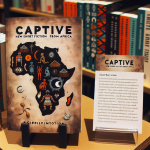
- Daily Light For Men Classic Collection of Devotional Scripture Readings from ESV Bible – Navy Faux Leather Flexcover Gift Book for Men w/Ribbon Marker, Gilt-edge Pages By: Christian Art Publishers Book Review
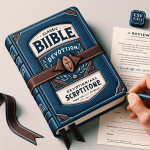
- Ms. Demeanor: A Novel By: Elinor Lipman Book Review

- A Class Act: The start of a BRAND NEW funny, fabulous series from bestseller Julie Houston for summer 2024 By: Julie Houston Book Review

- Piece of My Heart By: Alafair Burke Book Review

- Prodigal Summer By: Barbara Kingsolver Book Review

- Beyond Biden: Rebuilding the America We Love By: Newt Gingrich Book Review

- 65 Secrets to Amazing Retirement Travel – More Than 65 Intrepid Writers and Travel Experts Reveal Fun Places and New Horizons in Your Retirement (Milestone Series) By: Mark Evan Chimsky Book Review

- Imperfection Illuminated: Unveiling Japanese Wisdom for a Balanced Life By: Astrid Auxier Book Review

- Gus the Guitarist: A Fun Music Theory Book For Kids (Teaching Kids To Play Guitar, Learning About Notes and Scales) (The Musical Squirrels) By: Cynthia Lamb Book Review

- What Do You Call Your Dad? By: Ashleigh Barton Book Review

- Hidden Fires By: Sandra Brown Book Review

- Red-Handed: How American Elites Get Rich Helping China Win By: Peter Schweizer Book Review

- Colleen Hoover 3-Book Boxed Set: Reminders of Him, Layla, Regretting You By: Colleen Hoover Book Review

- The Spider’s House: A Novel By: Paul Bowles Book Review

- Finding God Again and Again By: John J Spitzer M D Book Review

- It Had to Be You: The BRAND NEW uplifting, heartwarming novel from NUMBER ONE BESTSELLER Beth Moran for 2024 By: Beth Moran Book Review

- Little Ash Sleepover Surprise! the brand new book of 2024 in the younger reader series from Australian tennis champion ASH BARTY By: Ash Barty Book Review

- A Cowboy Kind of Thing: An Opposites Attract Western Romance (Texas Cattleman’s Club: The Wedding Book 1) By: Reese Ryan Book Review

- Cocina Libre: Recetas de Resistencia Inmigrante (Spanish Edition) By: Dr. Julia Roncoroni Book Review

- Everything Beautiful in Its Time: Seasons of Love and Loss By: Jenna Bush Hager Book Review

- Never Too Late: A Novel By: Danielle Steel Book Review

- This House of Grief: The Story of a Murder Trial By: Helen Garner Book Review
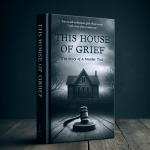
- The Courage to Be Free: Florida’s Blueprint for America’s Revival By: Ron DeSantis Book Review
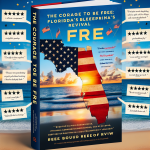
- Happy Endings By: Bella Green Book Review

- Practicing The Power Of Now By: Eckhart Tolle Book Review

- The Zen Book of Life: Wisdom from the Great Masters, Teachers, and Writers of All Time By: Mark Zocchi Book Review

- Die With Zero: Getting All You Can from Your Money and Your Life By: Bill Perkins Book Review

- Skinnytaste Meal Prep: Healthy Make-Ahead Meals and Freezer Recipes to Simplify Your Life: A Cookbook By: Gina Homolka Book Review

- Nena-the one thousand year old fox : a children’s adventure book By: Signora X Book Review

- The Duchess: The Scandalous Ladies of London By: Sophie Jordan Book Review
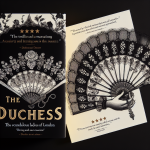
- The Stolen Child: A Novel By: Ann Hood Book Review

- The Most Bizarre True Crime Stories Ever Told: 20 Unforgettable and Twisted True Crime Cases that Will Haunt You By: Jack Rosewood Book Review
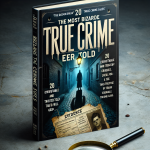
- The Glass Château: A Novel By: Stephen P. Kiernan Book Review

- Allegiance: Jackson Quick, Book 1 By: Tom Abrahams Book Review
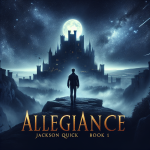
- The Self-Care Toolkit (4 Books in 1): Self-Therapy, Freedom from Anxiety, Transform Your Self-Talk, Control Your Thoughts, & Stop Overthinking (The Path to Calm, Book 16) By: Nick Trenton Book Review

- The Highlander’s Return: A Novel (Highland Brides Book 12) By: Lynsay Sands Book Review

- The Rabbi and the Hit Man: A True Tale of Murder, Passion, and Shattered Faith By: Arthur J. Magida Book Review

- Water Under The Bridge: A Psychological Thriller (The Water Trilogy Book 1) By: Britney King Book Review
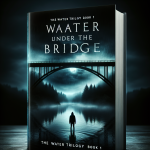
- Iceberg By: Clive Cussler Book Review

- Flamingo Diner By: Sherryl Woods Book Review

- God Never Gives Up on You: What Jacob’s Story Teaches Us About Grace, Mercy, and God’s Relentless Love By: Max Lucado Book Review
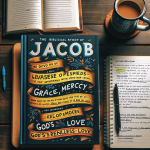
- The Rake Gets Ravished (Duke Hunt Book 2) By: Sophie Jordan Book Review
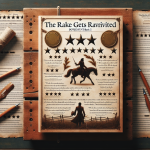
- The Girl in the Leaves (Berkley True Crime) By: Robert Scott Book Review
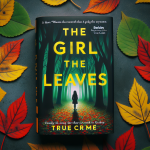
- Bad Luck and Trouble: Jack Reacher, Book 11 By: Lee Child Book Review
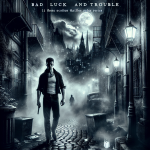
- Come On, Man!: The Truth About Joe Biden’s Terrible, Horrible, No-Good, Very Bad Presidency By: Joe Concha Book Review
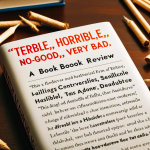
- The F*cking Answer Book: The Swear Words and Unapologetic Version. The ultimate guide to life’s bullsht. By: Daniel. L Book Review
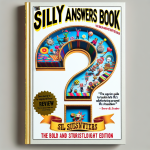
- Vanishing Acts By: Jodi Picoult Book Review


Lethal Passage: The Story of a Gun By: Erik Larson Book Review
$71.99$59.40As an Amazon Associate I earn from qualifying purchases.
Unveiling the Harrowing Truth: A Riveting Review of “Lethal Passage: The Story of a Gun”
“Lethal Passage: The Story of a Gun” by Erik Larson is more than just a narrative; it's an eye-opening exposé that dissects the dark and twisted journey of firearms in America. Larson meticulously traces the life of a single gun, exploring how it wends its way from manufacture to the hands of a teenage killer. This gripping work offers readers a chilling look at the systemic flaws and loopholes within the U.S. firearms industry, laying bare the disturbing ease with which guns can end up in the wrong hands.
As the story unfolds, Larson shines a light on the significant failings of gun control measures and the shocking reality of gun violence in America. The book not only engages readers with its compelling true-crime storytelling but also provides a thoughtful analysis of the socio-political landscape governing firearms. By weaving poignant narratives with hard-hitting investigative journalism, “Lethal Passage” tackles misconceptions, underscores the urgent need for systemic reform, and ultimately serves as a clarion call for change in how America handles its gun epidemic.
Plot:
“Lethal Passage: The Story of a Gun” follows the journey of a single firearm, from its creation to its eventual use in a deadly shooting. The book meticulously chronicles each step of the gun's passage through various hands, illuminating how easily and legally firearms can move through the market. The plot delves into not just the physical journey of the gun, but also the socio-political and legal frameworks that facilitate this journey. Through a combination of investigative journalism and narrative storytelling, Erik Larson exposes the vulnerabilities in the American gun control system, shedding light on the broader implications of gun violence in the United States.
Characters:
The characters in “Lethal Passage: The Story of a Gun” are not traditional fictional figures but real-life individuals whose lives are impacted by the featured firearm. Larson introduces us to manufacturers, gun dealers, lobbyists, law enforcement officers, and victims. One of the key characters is the teenage shooter who ultimately uses the gun in a school shooting, providing a harrowing glimpse into the human cost of gun violence. Another significant figure is the gun dealer who appears to operate within legal limits but raises ethical questions about the ease with which guns are distributed. These characters collectively build a comprehensive picture of the many facets involved in America's gun culture.
Writing Style:
Erik Larson is known for his exceptional investigative journalism, and his writing style in “Lethal Passage” is no exception. The book is meticulously researched, backed by statistics, interviews, and real-life case studies that add depth and authenticity to the narrative. Larson's style is both engaging and informative, balancing hard facts with compelling storytelling. He has the ability to break down complex legislative and sociological issues into understandable segments, making the book accessible to a broad audience. His narrative is often interspersed with poignant anecdotes and observations, which enrich the reading experience and drive home the severity of the issues discussed.
Setting:
The settings in “Lethal Passage” are varied, reflecting the diverse journey of the firearm. From the manufacturing plants where guns are produced to the local gun shops where they are sold, each setting is described in detail to give readers a vivid understanding of the gun's journey. Key scenes include American neighborhoods, schools, and law enforcement offices, all portrayed in a way that highlights the pervasive reach of firearm distribution. The setting extends beyond physical locations to encompass the legal and political landscape of the United States, detailing how local and federal regulations interact and sometimes fail.
Unique Aspects:
One of the unique aspects of “Lethal Passage” is its focus on a singular firearm to explore a broad and complex issue. By narrowing the scope to one gun, Larson provides a detailed and impactful microcosm that reflects the larger problems of gun control and violence in America. The book also stands out due to Larson's thorough investigative approach, bringing real-life stories and voices to the forefront which are often missing in discussions about gun legislation. Another distinctive feature is the book's balanced tone; Larson objectively presents multiple perspectives, from gun rights advocates to victims' families, allowing readers to form their own conclusions based on comprehensive information. This nuanced portrayal makes “Lethal Passage” a groundbreaking work in the discourse on American gun culture.
Pros of “Lethal Passage: The Story of a Gun” Book Review
Engaging Writing Style
The author’s engaging writing style grabs the reader’s attention from the first page. Vivid descriptions and compelling narrative techniques make it easy to become immersed in the subject matter, regardless of prior interest in the topic of guns. This accessibility broadens the book's appeal, drawing in readers who might not typically engage with non-fiction or investigative journalism.
Comprehensive Research
The book is underpinned by thorough research, offering a well-rounded perspective on the subject of gun violence in America. Various case studies, historical data, and legal considerations are meticulously detailed, providing the reader with a broad understanding of the complexities involved. This depth of information adds to the book's credibility and educational value, enriching the reading experience.
Thought-Provoking Content
“Lethal Passage: The Story of a Gun” challenges readers to think critically about the implications of gun ownership and gun control. The book’s thought-provoking content encourages deeper reflection on ethical, legal, and social dimensions. This aspect engages the reader intellectually, providing a stimulating experience that extends beyond mere entertainment.
Clear Argumentation
The book presents its arguments in a clear, logical manner, making it easy for readers to follow the author's line of reasoning. The straightforward structure aids in understanding complex issues related to gun violence and legislation. This clarity ensures that the material is accessible even to readers unfamiliar with the topic, making the book a useful resource for educational purposes.
Cons of “Lethal Passage: The Story of a Gun” Book Review
Bias in Presentation
Despite its strengths, the book shows signs of bias that may alienate some readers. The author's perspective on gun control is evident and might overshadow the objective presentation of facts. This bias can detract from the book's credibility for readers seeking a balanced viewpoint, potentially impacting their overall reading experience negatively.
Dense and Overwhelming Information
The book’s detailed extent of information can sometimes feel overwhelming to the reader. The high density of facts, figures, and case studies may cause fatigue or confusion, particularly if the reader lacks a background in the subject. This complexity might diminish the book’s accessibility and appeal to casual readers or those new to the topic.
Emotional Weight
The subject matter of gun violence is intrinsically heavy, and the emotional weight of certain sections may be burdensome for some readers. Harrowing accounts and vivid descriptions of violence can be distressing, impacting the reader’s overall experience negatively. This intensity requires emotional resilience on the reader’s part, which might limit the audience to those prepared for such content.
Limited Practical Solutions
While the book effectively highlights issues and poses pertinent questions, it falls short in providing practical solutions to the problems discussed. Readers seeking actionable insights or clear recommendations might feel disappointed. This gap can leave the reader feeling frustrated or helpless, impacting their satisfaction with the book’s contribution to the discourse on gun control.
Overall Impact on User Experience
Intellectual Engagement
The book’s thorough research and clear argumentation foster intellectual engagement, making it a stimulating read for those interested in societal issues. This engagement enhances the reader’s experience by providing substantive content to ponder and discuss, enriching their understanding and encouraging ongoing contemplation of the topic.
Reader Accessibility
The engaging writing style and comprehensive nature of the research enhance the book’s accessibility, making it approachable for a wide audience. However, bias and dense information might limit this accessibility, impacting the overall reader experience by potentially alienating or overwhelming them, depending on their perspective and prior knowledge.
Emotional Resonance
The emotional gravity of the book can create a powerful resonance with readers, making the narrative memorable and impactful. However, the intensity might also deter some readers or negatively affect their experience if they find the content too distressing. This dual-edged impact underscores the book’s potential to both engage and unsettle its audience.
Expectations of Practicality
While the book excels in raising awareness and prompting critical thought, its lack of practical solutions may disappoint readers seeking direct answers or actionable advice. This shortfall can impact reader satisfaction, emphasizing the need for a balanced approach that combines critical examination with tangible recommendations for addressing the issues discussed.
FAQ for Lethal Passage: The Story of a Gun Book Review
What is “Lethal Passage: The Story of a Gun” about?
“Lethal Passage: The Story of a Gun” by Erik Larson explores the journey of a single gun, tracing how it passes through various hands and impacts lives. The book delves into the broader issues of gun control, violence, and the firearms industry in the United States.
Who is the author of the book?
The book is authored by Erik Larson, a renowned writer known for his detailed narrative non-fiction works. Some of his other famous books include “The Devil in the White City” and “Dead Wake.”
What genre does the book fall into?
The book falls into the non-fiction genre, specifically focusing on investigative journalism and socio-political analysis. It examines real-life events and issues concerning gun culture in America.
Is the book based on a true story?
Yes, the book is based on true events. Erik Larson meticulously researches and presents the real-life journey of a firearm, exploring its social and legal implications.
What topics does the book cover?
The book covers a variety of topics including the history of firearms in America, gun legislation, the impact of guns on individuals and communities, and the role of the firearms industry. It also includes case studies and real-life stories to illustrate these themes.
Who would find this book interesting?
The book would be of interest to readers who are concerned about gun violence, those interested in public policy, law enforcement professionals, and anyone who enjoys investigative journalism and non-fiction narratives.
Is there any controversial content in the book?
The book addresses sensitive and potentially controversial topics such as gun control, violence, and the Second Amendment. Readers with strong opinions on these issues may find some of the content provocative or challenging to their viewpoints.
Does the book offer any solutions to gun violence?
While the primary focus of the book is on presenting the problem and its complexities, Erik Larson does discuss various viewpoints and potential solutions to gun violence. However, the book is more investigative in nature rather than prescriptive.
How is the book structured?
The book is structured as a narrative, interwoven with investigative reporting. It follows the journey of a gun while diving into related historical, legal, and social contexts. It includes both chronological storytelling and thematic exploration.
What are some notable reviews or receptions of the book?
“Lethal Passage: The Story of a Gun” has received praise for its thorough research and compelling narrative style. Critics have lauded Larson for his ability to tackle a complex and contentious issue with both depth and sensitivity. Readers have found it to be an eye-opening and thought-provoking read.
“Lethal Passage: The Story of a Gun” by Erik Larson serves as a crucial examination of America's complex and often problematic relationship with firearms. A meticulously researched account, this book unfolds the saga of a single gun and its journey through American society, illuminating the systemic issues and personal tragedies that accompany the proliferation of firearms in the United States. By delving into the life of the gun that was used in a tragic school shooting, Larson presents a narrative that is both chilling and enlightening, offering readers an in-depth look at the ease with which lethal weapons can travel from manufacturer to crime scene.
One of the most compelling reasons to read “Lethal Passage” is its balanced approach to a polarizing topic. While many discussions surrounding gun control often devolve into partisan bickering, Larson offers a thoughtful and fact-based exploration that aims to inform rather than incite. By doing so, the book appeals to a broad spectrum of readers, providing value whether you are a gun control advocate seeking a deeper understanding of the issues or a gun owner interested in the ramifications of firearm legislation.
Larson's narrative prowess is another strong point in favor of this book. Known for his ability to weave complex historical and contemporary events into highly readable stories, Larson does not disappoint in “Lethal Passage.” His vivid storytelling not only captures the intricate details of the gun's journey but also delves into the socio-political environment that facilitates such movements. This immersive approach ensures that readers will not only be informed but also engaged, making the learning process both substantive and enjoyable.
Additionally, the book offers valuable insights into the legal and regulatory loopholes that often allow guns to slip through the cracks of bureaucracy. Larson's exhaustive research highlights systemic failures and oversights, compelling readers to critically evaluate existing policies and consider the urgent need for reform.
In summary, “Lethal Passage: The Story of a Gun” is an indispensable read for anyone interested in understanding the multifaceted issues surrounding gun control in America. Its balanced narrative, combined with Larson’s engaging writing style and comprehensive research, makes it a noteworthy contribution to the ongoing debate. This book not only enlightens but also equips readers with the knowledge needed to engage thoughtfully and effectively in discussions about one of the nation's most pressing issues.
Amazon and the Amazon logo are trademarks of Amazon.com, Inc, or its affiliates.
Related Posts